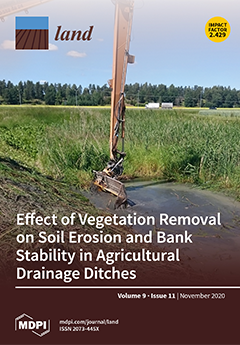Resource information
There is a growing interest for scientists and society to acquire deep knowledge on the impacts from environmental disasters. The present work deals with the investigation of vegetation dynamics in the Chernobyl area, a place widely known for the devastating nuclear disaster on the 26th of April 1986. To unveil any possible long-term radiation effects on vegetation phenology, the remotely sensed normalized difference vegetation index (NDVI) from the Moderate Resolution Imaging Spectroradiometer (MODIS) was analyzed within the 30 km Exclusion Zone, where all human activities were ceased at that time and public access and inhabitation have been prohibited ever since. The analysis comprised applications of seasonal trend analysis using two techniques, i.e., pixel-wise NDVI time series and spatially averaged NDVI time series. Both techniques were applied in each one of the individual land cover types. To assess the existence of abnormal vegetation dynamics, the same analyses were conducted in two broader zones, i.e., from 30 to 60 km and from 60 to 90 km, away from Chernobyl area, where human activities were not substantially altered. Results of both analyses indicated that vegetation dynamics in the 30 km Exclusion Zone correspond to increasing plant productivity at a rate considerably higher than that of the other two examined zones. The outcome of the analyses presented herein attributes greening trends in the 30 km and the 30 to 60 km zones to a combination of climate, minimized human impact and a consequent prevalence of land cover types which seem to be well adapted to increased radioactivity. The vegetation greening trends observed in the third zone, i.e., the 90 km zone, are indicative of the combination of climate and increasing human activities. Results indicate the positive impact from the absence of human activities on vegetation dynamics as far as vegetation productivity and phenology are concerned in the 30 km Exclusion Zone, and to a lower extent in the 60 km zone. Furthermore, there is evidence that land cover changes evolve into the prevalence of woody vegetation in an area with increased levels of radioactivity.


